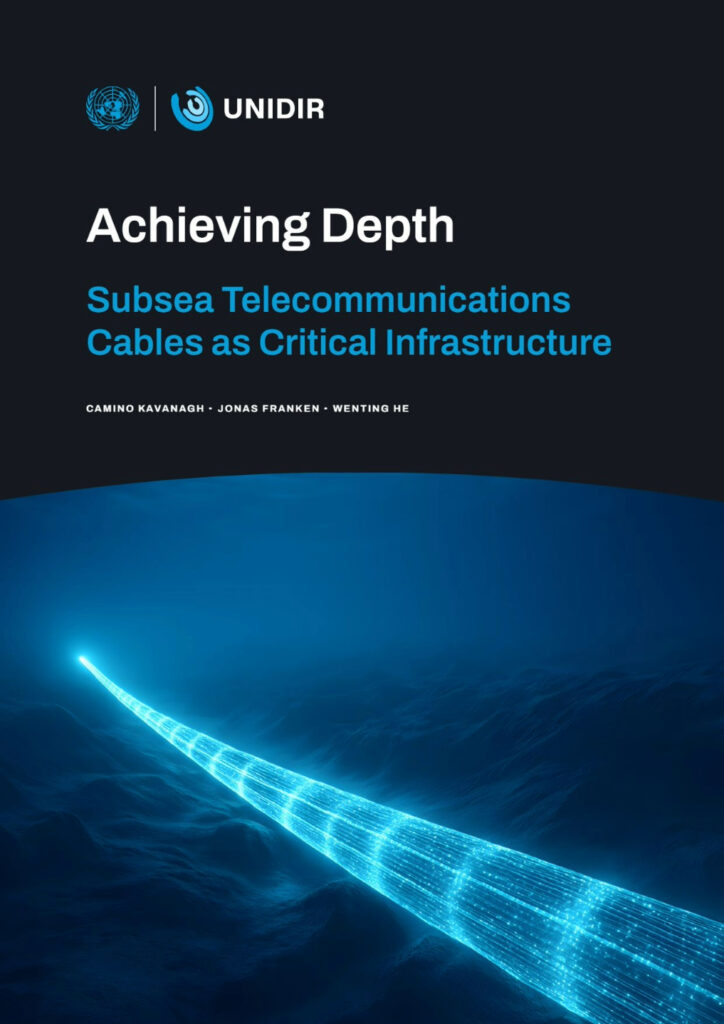Today, submarine fibre-optic telecommunications cable systems are the backbone of our data and communications infrastructure, essential to the general functioning and integrity of the internet and the broader information and communications technology (ICT) ecosystem. While satellites and the new constellations in low Earth orbit are breaking ground, especially in terms of lowering costs and accessibility, they are still no match to the high capacity and low latency that today’s subsea cable systems provide. As more countries are connected, the security and resilience of the infrastructure becomes ever more critical.
In 2023, UNIDIR published its first report on subsea cables, entitled Wading Murky Waters: Subsea Communications Cables and Responsible State Behaviour. The initial scoping study sought to raise awareness of this essential transmission technology. Since then, a slew of new initiatives have been proposed, including at the international level, signalling both the strategic importance of the infrastructure and the need to strengthen security and resilience across all of its components.
This follow-on study sets out to understand what it means in policy and practice when governments qualify or designate subsea telecommunications cables as critical infrastructure (CI). The report draws from the CI literature to frame government approaches to security and resilience, identifying how government policy and practice interact with core CI concepts such as absorptive, restorative and adaptive resilience capacities. While subsea cable systems are generally designed and deployed with these capacities in mind, effective government action on security and resilience can contribute to strengthening them.
Citation: C. Kavanagh, J. Franken, and W. He. “Achieving Depth: Subsea Telecommunications Cables as Critical Infrastructure”. Geneva, Switzerland: UNIDIR, 2025.
